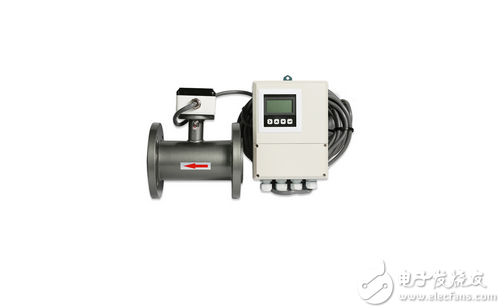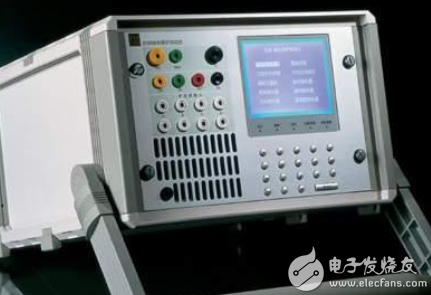In industrial production, voltage transients and surges of electrical equipment in use are ubiquitous. Power grids, lightning strikes, blasting, and even people walking on carpets can generate tens of thousands of volts of static induction voltage. These are instrumentation. The invisible deadly killer of the integrated electromagnetic flowmeter . Instrumentation often encounters unexpected voltage transients and surges during use, which can cause damage to electronic equipment. The cause of damage is that semiconductor devices (including diodes, transistors, thyristors, and integrated circuits) in the instrumentation are Burnt or puncture. According to statistics, 75% of faults in instrumentation are caused by transients and surges. Therefore, in order to improve the reliability of the instrument and the safety of the human body, it is necessary to take protective measures against voltage transients and surges. Let's take a look at the related content with the electronic enthusiasts.

Electrostatic discharge (ESD) and electrical fast transient bursts (EFT) can cause varying degrees of hazard to instrumentation systems. Electrostatic discharge produces intense RF radiation in the frequency range of 5 to 200 MHz. This peak of radiant energy often occurs between 35 MHz and 45 MHz. The resonant frequency of many information transmission cables is also usually in this frequency range, resulting in a large amount of electrostatic discharge radiation energy being incorporated into the cable. Electrical fast transient bursts also generate relatively strong radiated emissions that are coupled to the cable and chassis lines. When the cable is exposed to an electrostatic discharge environment of 4 to 8 kV, the induced voltage at the end of the information transmission cable can reach 600 V. This voltage is far beyond the threshold voltage of a typical digital instrumentation of 0.4 V. Typical induced pulse The duration is approximately 400 nanoseconds.
First, the lightning protection port of the instrument

According to the engineering practice of the instrument-integrated electromagnetic flowmeter application, the instrumentation can be roughly divided into direct lightning strike, induced lightning and conductive lightning by lightning strike. However, the arrival of the device in any form can be summarized as lightning surges invading from the following four locations, and these locations are referred to herein as lightning protection ports, and are illustrated by instrumentation.
1, the shell port
For example, we can treat any large or small instrument or system as a whole, such as sensors, transmission lines, signal relays, field instruments, DCS systems, etc., all of which may be completely exposed to the environment. Direct lightning strikes, resulting in equipment damage. The standard stipulates that when the equipment casing is subjected to 4kV lightning electrostatic discharge, it will affect the normal operation of the instrumentation or system. For example, the sensor terminal box placed outdoors may be exposed to lightning contact discharge; the DCS cabinet located in the equipment room may be exposed to air discharge when the building column is discharged.
2, signal line port (including antenna feeder line, data line, control line, etc.)
In the control system, in order to realize the transmission of signals or information of the integrated electromagnetic flowmeter, there must always be a connection with the outside world, such as the main distribution frame of the signal transmission end of the process control system, the terminal of the data transmission network, and the microwave device to the antenna. The feeder port and so on, then these interfaces that receive signals from the outside or transmit signals may be affected by lightning surges. Because the surge from the signal port outside the building often passes through the long cable, the 10/700μs waveform is used. The standard specified line-to-line surge voltage is 0.5kV, and the line-to-ground surge voltage is 1kV. The port that transmits signals between the instruments in the building is subjected to a surge impact equivalent to the surge on the power line. The 1.2/50 (8/20) μs combined wave, line-to-line, line-to-ground surge voltage limit is used. constant. Once the limit is exceeded, the signal port and the device behind the port may be damaged.
3, the power port
Power ports are the most widely distributed and easily inductive or conducted lightning waves. These power ports can be placed anywhere from the power distribution box to the power outlet. The standard specifies a surge voltage limit of 0.5kV between line and line for a 1.2/50 (8/20) μs waveform and a line-to-ground surge voltage limit of 1kv. However, the surge voltage here indicates that the working voltage is 220V AC. If the working voltage is low, it cannot be used as the standard. The small surge impact on the power line does not necessarily damage the equipment immediately, but at least the life is affected.
4, the grounding port
Although there is no specific reference to the grounding port specification in the standard, the port of the information technology equipment is actually very important. When the lightning occurs, the grounding port may be affected by the ground potential counterattack and the ground potential increase, or the grounding resistance may be too large and the grounding resistance may not reach the reference potential requirement to damage the equipment. The grounding port not only has requirements for the grounding resistance/grounding pole (length, diameter, material), grounding method, grounding grid, etc., but also has direct relationship with the electrical characteristics, working frequency band, working environment, etc. of the equipment. At the same time, from the ground terminal, it is possible to counter the device that damages the DC working voltage to the DC power port. In summary, the lightning protection of information technology equipment can be considered starting from four key ports.
Second, instrumentation port protection
1, the shell port
The instrument port protection of the instrument-integrated electromagnetic flowmeter is not only the building shell, but also the casing of a certain equipment or the casing of a certain system, such as a cabinet, a computer room, and the like. According to IEC1312-1 "Protection of Lightning Electromagnetic Pulses", the first part (general principle) is applicable to the design, installation, inspection and maintenance of an effective lightning protection system for instrumentation integrated electromagnetic flowmeter systems in buildings or at the top of buildings. . There are three main protection methods: grounding, shielding and equipotential bonding.
2, grounding
The method of lightning protection and grounding of buildings has been expounded in IEC1024-1, mainly through the underground mesh grounding system of buildings. The lightning protection of the instrumentation system also requires the power line passing between two adjacent buildings. The communication cable must be connected to the building grounding system (cannot form a loop) to reduce the current in the cable by using multiple parallel paths.
The grounding of the instrument-integrated electromagnetic flowmeter system should pay more attention to the safety of the system and prevent other system interference. Generally speaking, the grounding of the instrumentation system under working conditions cannot be directly connected to the lightning protection ground wire, otherwise there will be stray current entering the instrumentation system causing signal interference. The correct connection method should connect two different grounding nets underground through the arrester low-voltage arrester to automatically connect them in the lightning strike state.
3, shielding
Theoretically, shielding is very effective against lightning protection of instrumentation enclosures. However, from an economical point of view, different shielding methods should be selected from the requirements of equipment component immunity and shielding effectiveness. Line shielding, that is, the use of shielded cables in instrumentation systems has been widely used. However, shielding of equipment or systems is subject to availability. The IEC proposes an example of measures to connect building reinforcement to a metal frame.
Dc Gear Motor,Dc Motor 24V,220V Gear Motor,Permanent Magnet Dc Motor
NingBo BeiLun HengFeng Electromotor Manufacture Co.,Ltd. , https://www.hengfengmotor.com
